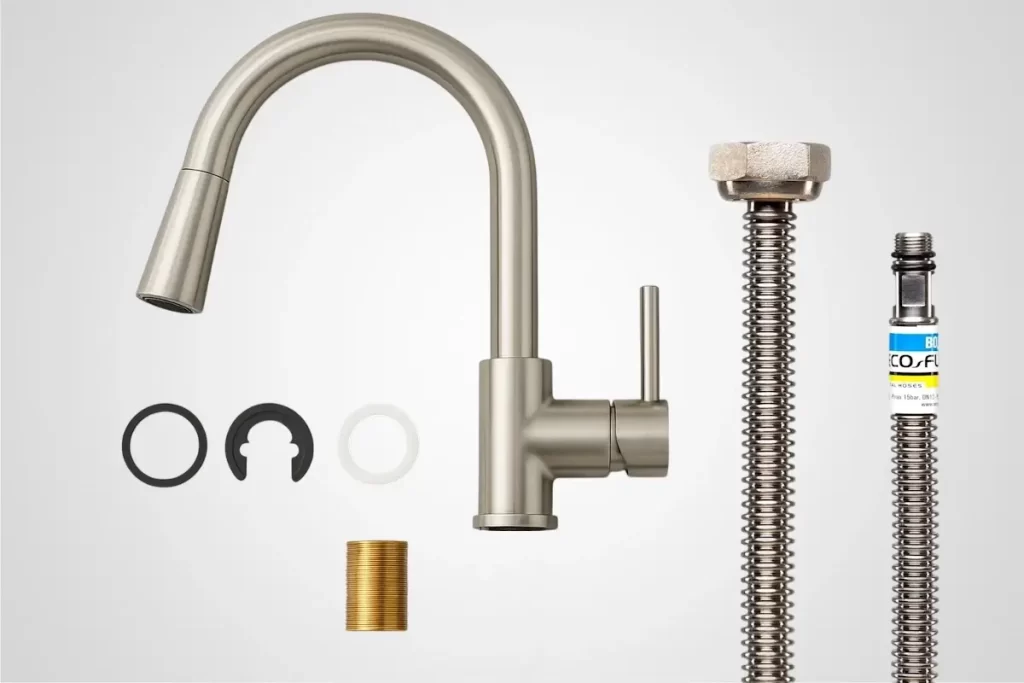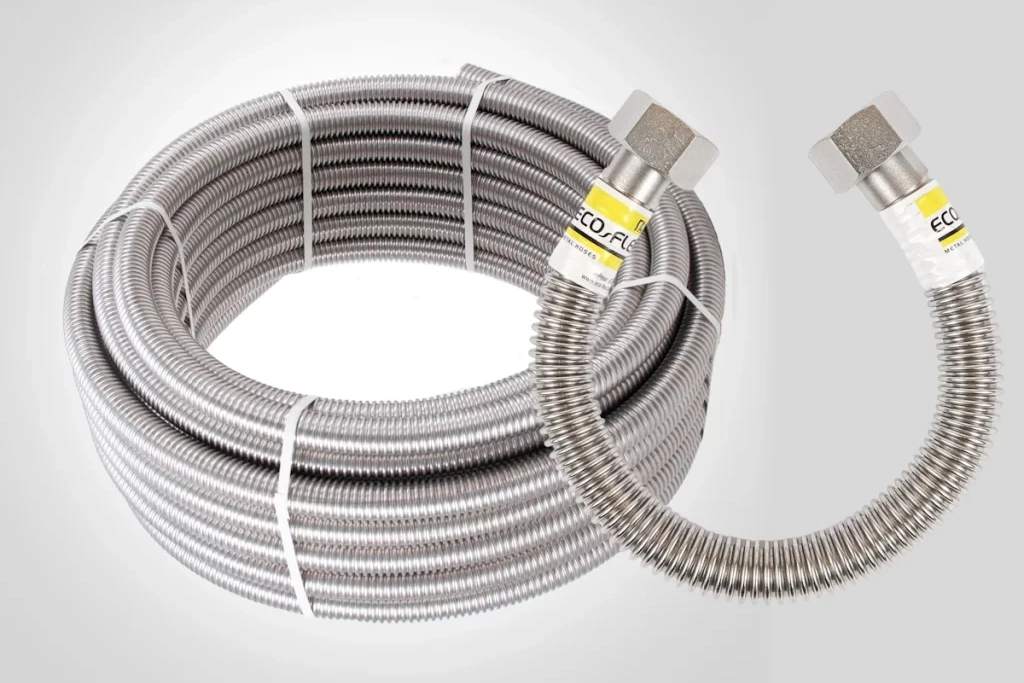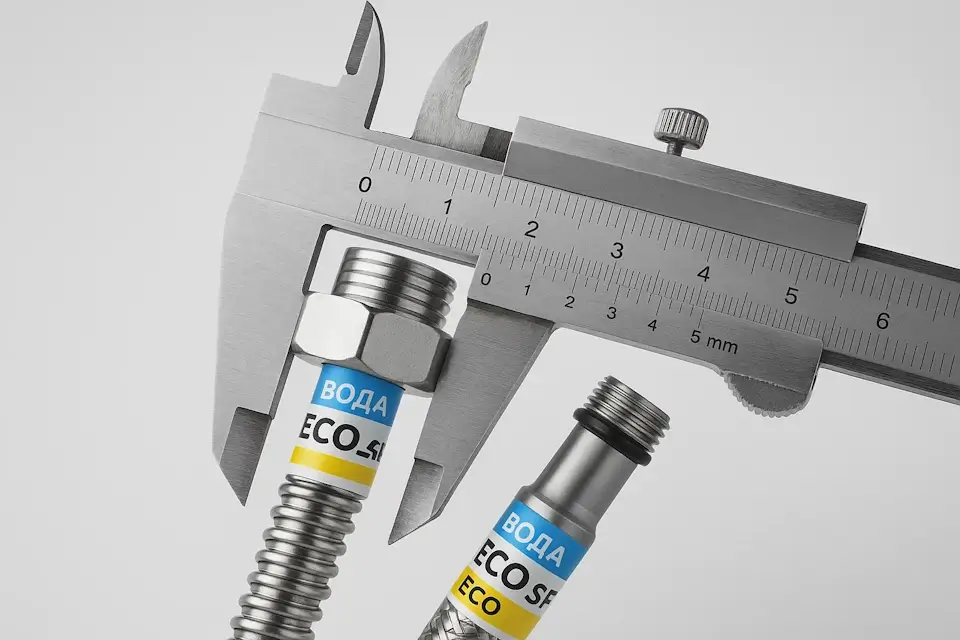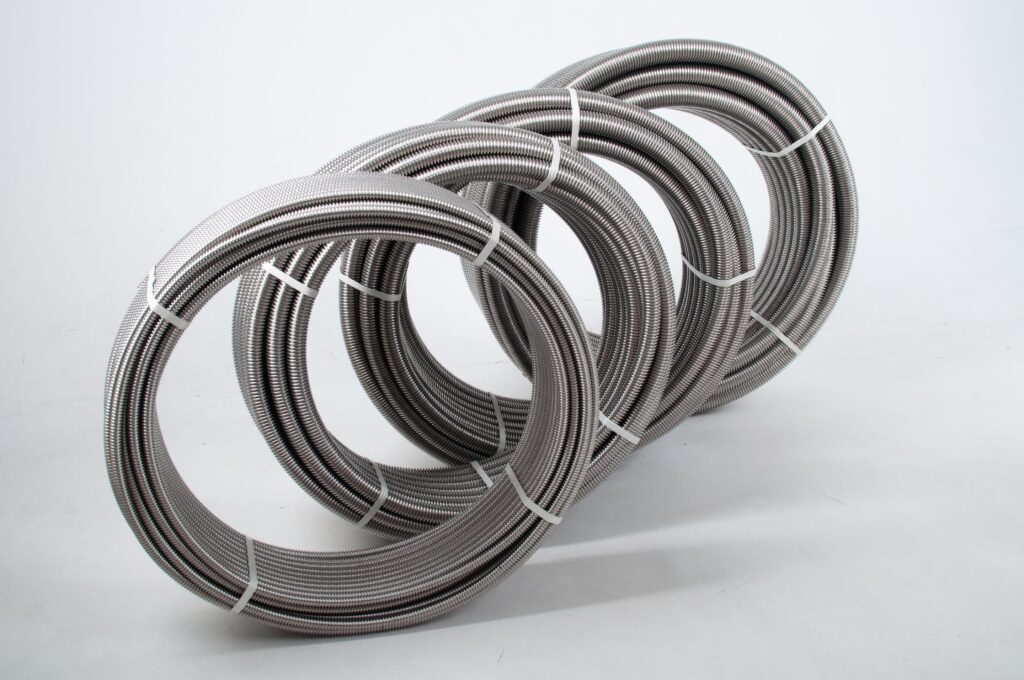 Comfort and safety in the kitchen start with the details. One of these elements is the flexible hose for the kitchen faucet – an invisible, but critically important component of the plumbing system. Not only the convenience of using the faucet, but also the durability and safety of the entire system depend on its quality. In this article, we will consider how to choose the right hose for a kitchen faucet, and why you should pay attention to stainless steel models.
Comfort and safety in the kitchen start with the details. One of these elements is the flexible hose for the kitchen faucet – an invisible, but critically important component of the plumbing system. Not only the convenience of using the faucet, but also the durability and safety of the entire system depend on its quality. In this article, we will consider how to choose the right hose for a kitchen faucet, and why you should pay attention to stainless steel models.
A flexible faucet hose provides a connection between the water supply pipes and the kitchen faucet. It must be strong, reliable, not subject to corrosion and withstand pressure and temperature changes. The wrong choice can lead to leaks, damage to furniture and even flooding of the kitchen.
Why material matters: the advantages of stainless steel faucet hoses
Stainless steel has several features that make a hose made of this material an ideal choice for connecting a faucet in the kitchen.
- High strength and durability. The design of a flexible stainless steel hose prevents mechanical damage. Such a flexible kitchen faucet hose can last more than 10 years, while rubber or textile counterparts can last several times less.
- Corrosion resistance. Stainless steel does not rust or oxidize when in constant contact with water and condensate, making it an ideal choice for use in humid environments, such as under the sink. This guarantees a long service life and maintains an aesthetic appearance.
- Hygiene. Stainless steel is a hygienic material. Using a stainless steel faucet hose does not affect the taste or smell of water. Bacteria and fungus do not multiply on the surface of the hose, which is especially important for the kitchen area where we prepare food.
- Shape retention. The metal structure prevents kinks and kinks, so water flows freely even with complex installation.
- Resistance to temperature and pressure changes. Stainless steel hoses can easily withstand high hot water temperatures and pressure surges in the plumbing system, which is a common occurrence in apartment buildings.
Sizes and standards of flexible hoses for mixers
When choosing a flexible hose for a mixer, you should consider several important characteristics:
- Hose length. Measure the distance from the outlet of the water supply pipes to the threaded connection on the mixer. The hose should not be pulled “into a string” or sag much. Always leave a small margin in length for free connection. Standard lengths vary from 30 cm to 1.5 meters.
- Diameter and type of connection. There is a standard for the mixer supply, which is followed by most manufacturers. On one side of the hose there is a fitting (usually M10) for connecting directly to the mixer, and on the other – a union nut for connecting to the water pipe. The most common size of this nut in Ukraine is 1/2 inch. This is the standard by which the water hose Eco-Flex Water Mix is manufactured.
Installation tips
To ensure that the flexible stainless steel hose serves you for many years without interruption, remember that when installing it, you must:
- do not overtighten the nuts, as this may damage the gasket;
- check the tightness of the connections after installation, for which slowly open the water supply valves and carefully inspect all connections for leaks. If you notice water droplets, tighten the corresponding nut a little.
Conclusion
A high-quality hose for a kitchen faucet is not a place to save money, but an investment in your peace of mind and safety. By choosing a stainless steel hose from a trusted manufacturer such as Eco-Flex, you ensure maximum reliability and durability of the connection, protecting your kitchen from potential accidents for many years to come. By considering the correct dimensions of the flexible hose for your mixer and following our advice, you can easily make the right choice to ensure easy installation and reliable operation.


